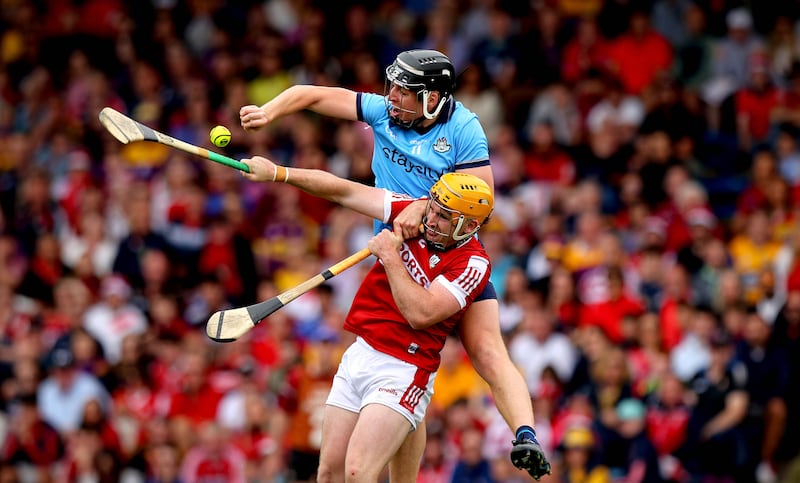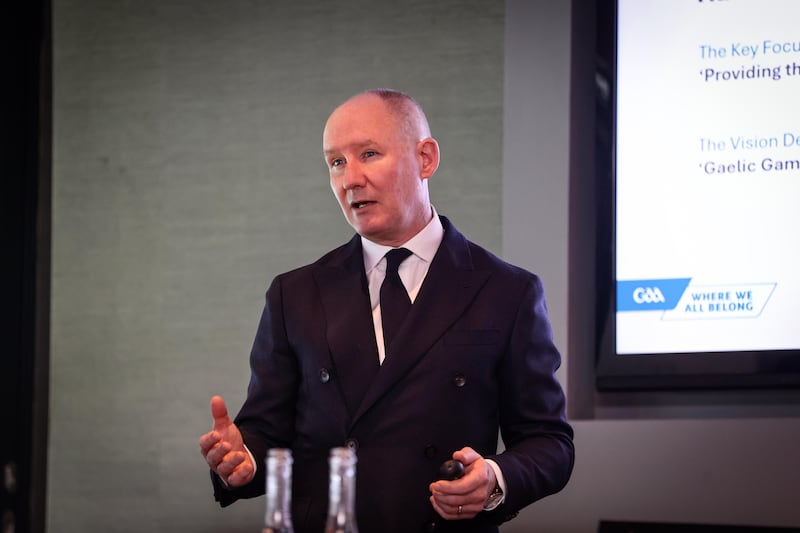The split season is living up to its name.
For the last few weeks, the clearest division within Gaelic games looks to be between those displeased by the loss of intercounty calendar space and those happy with the benefits accruing.
There are arguments on both sides. It’s not ideal that the fixtures are so compressed that supporters are flung around by the g-force of hurtling from one weekend to the next.
This plays out in two distinct impacts on hurling.
Galway without Young Footballer of the Year nominee Matthew Thompson for National League
Pain of 2024 final defeat fuelling St Brigid’s ahead of All-Ireland club final, says Paul McGrath
Walsh Cup proceeds after Westmeath-Kilkenny match decided on coin toss
‘Now we have to win it’: Dingle squeeze past Ballyboden to make All-Ireland date with St Brigid’s
One, the All-Ireland final suffers from inadequate time in which to celebrate the new champions and reflect on the old season because the football final is rushing up to meet it. And two, the quarter-finals have the uneasy air of events to be dispensed with as quickly as possible.
Institutionalised by the promise to give the Tailteann Cup semi-finals a Sunday to themselves, the past couple of years saw Saturday hurling quarter-finals bent out of shape by the need to find broadcasting space in busy summer schedules, bottoming out with last June’s lunchtime theatre in Thurles.
Although the unsatisfactory nature of this is acknowledged, there is a reluctance to guarantee the two matches will be in future staged on Sundays, despite preference for that day remaining an article of faith for the more traditionally-minded hurling supporters.
That reluctance is partly based on the inadvisability of the CCCC tying itself up, in case dual commitments beset specific counties or whatever – sound logic, but illustrating how problematic the original undertaking to the Tailteann had been.
One other issue to bear in mind with the hurling quarter-finals is that they have not had quite the status of the football equivalent during the qualifier era, as a starting line for the All-Ireland series.
This year was only the third time in 28 championships that both quarter-finalists made it all the way to the final. Usually, the form teams are already waiting in the All-Ireland semi-finals, a fact that can weigh on expectations of both quarter-final teams and their supporters.

Still, all the more reason to give the fixtures the best possible chance to fulfil their potential.
Hurling though has had a stellar year: big crowds and sensational matches – features admittedly more on show in Munster than in Leinster, but the latter had its own attractions and is tasked with more developmental work than its southern counterpart.
A popular reaction to the final was to lament the lack of a replay instead of extra-time – again a reflection of calendar pressures – and sympathise with players who were disabled by fatigue or injury. The counter argument is that this allowed both teams to give meaningful game time to their panels, enabling unsung players a shot at the biggest occasion of the year, a vindication of the collective nature of the game.
A further complaint about the current restriction on the intercounty season is that the purpose of splitting the season – to give time back to the clubs – is not being met because county championships have hardly moved from traditional dates.
This slightly moves the goalposts on the original argument, which was to give time back to clubs not necessarily to play championships earlier. Further to that, it gives intercounty players back to their clubs, and also gives clubs back to intercounty players.
During the 2020 summer of Covid, when the club season preceded the intercounty, it was noticeable how enthusiastic county players were about simply training with their clubs and getting to know younger team-mates.
Those involved in more successful counties have also been able to take holiday time in late July or August without creating difficulties for county championship preparation.
All players have now been given certainty about fixtures, and when they fall, without last-minute adjustments to accommodate the intercounty calendar.

Complaints to Croke Park about the shortcomings of club schedules have apparently all but dried up since 2019 and the Gaelic Players’ Association has reported player attitudes to the split season as being 85 per cent positive, presumably for the above reasons.
Of course, there has also been the flight to the US, which has removed club players, who sometimes don’t get back in time for early championship matches. But that issue has been around for a long time and didn’t need the split season to highlight its attendant complications.
When Central Council meets at the start of September, it will be more concerned about football. Two processes are under way. One is to consider the structure and timing of the championship whereas the other is Jim Gavin’s Football Review Committee, looking into ways of improving the game.
The first will be the immediate focus. After a summer of disquiet over the lack of jeopardy in the championship, proposals likely to get Central Council’s imprimatur to proceed to Congress have been devised to replace the All-Ireland round-robin with a knock-out format.
This will see the eight provincial finalists play the next eight teams, seven determined by league position plus Down – if they don’t qualify through the league – as Tailteann winners.
Winners of the four fixtures involving the provincial champions will go straight to the All-Ireland quarter-finals, whereas the losers of those fixtures will face the other four teams in a preliminary quarter-final.
It is an ingenious way of allowing provincial champions get another chance if they lose a match – recognition of their status.
Whereas it remains to be seen whether this will be introduced for 2025 – it will need a decision either from December’s Special Congress on the Gavin proposals or Annual Congress next February – there is no comparably imminent resolution of the calendar window issue.
A small majority exists in favour of the status quo and it may well be retained for a further year as opposed to going a week or two into August.


















